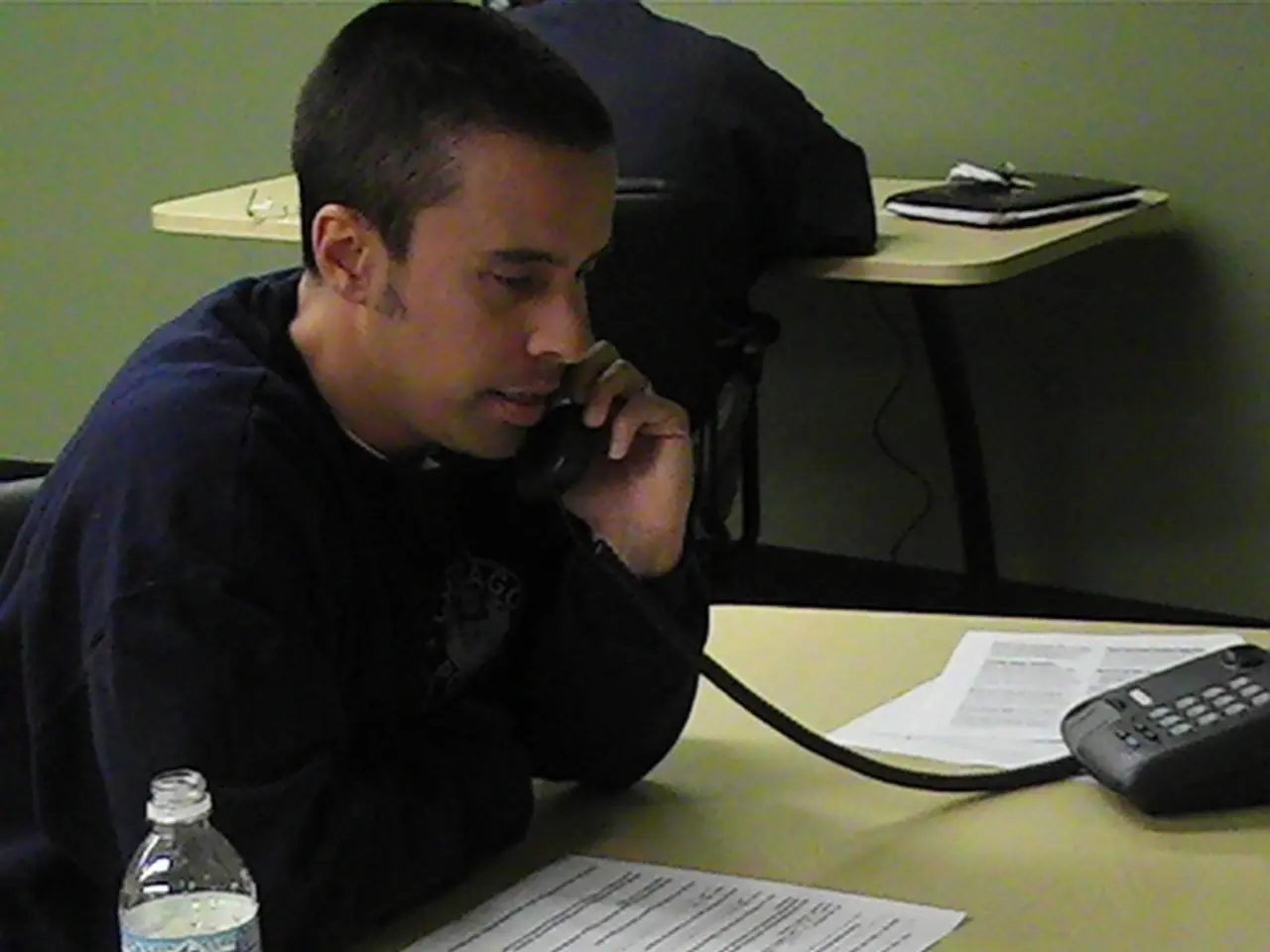Impact of Video Calls on Psychological Well-being Examined
In the era of remote work, video calls have become a staple for maintaining connections, both personal and professional. However, their prevalence also raises questions about their effects on mental health.
One of the most pressing concerns is video call fatigue, a phenomenon characterised by mental, emotional, and physical exhaustion resulting from prolonged video conferencing. Factors contributing to this include excessive eye contact, the "mirror effect" of seeing oneself on screen, and limited mobility during calls. Symptoms often include headaches, frustration, and reduced focus, which can impair productivity and overall well-being[1].
Another challenge is the pressure to dress up and the potential embarrassment that arises when personal and professional lives overlap during video calls at home. This added stress can exacerbate anxiety[1].
Constant vigilance during video meetings can also heighten anxiety, especially when employees feel scrutinized or fear technical glitches. The cognitive load of interpreting non-verbal cues online is higher, contributing to stress[1].
Remote work often reduces natural social interactions, leading to feelings of loneliness and guilt. Employees may struggle to maintain work-life boundaries and feel they should be more "available" on camera[2][3].
Despite these challenges, video calls offer benefits related to flexibility, connectivity, and maintaining relationships. Remote work facilitated by video calls can improve mental health through better routines, personalized environments, healthier lifestyles, and improved work-life balance, which reduce overall anxiety and depression for many workers[4].
Video calls can also help reduce feelings of loneliness, particularly for those who are isolated or unable to leave home. They enable learning from home, making education more accessible for many people[5].
Telemedicine, facilitated by video calls, has become a crucial tool in healthcare during the COVID-19 pandemic, allowing virtual visits with healthcare providers. Similarly, on-demand mental health support through telemedicine can make therapy more accessible from home[6].
However, prolonged screen time during video calls can lead to headaches, which may impact mental health[1]. Furthermore, while learning from home may have a positive impact on some people's mental health, it could also create higher levels of stress for others due to feeling less supported[7].
In conclusion, the widespread use of video calls in remote work introduces challenges such as fatigue, anxiety, embarrassment, and loneliness, but also offers benefits related to flexibility, connectivity, and maintaining relationships when managed with care. Awareness and strategies to reduce video call fatigue and intentional efforts to foster social connection are key to supporting mental health in this context[1][2][3][4].
References: [1] Stanford Graduate School of Business. (2020). Zoom fatigue is real. Here's why it happens. Retrieved from https://www.gsb.stanford.edu/insights/zoom-fatigue-real-heres-why-it-happens
[2] Cipriani, A., & Freeman, D. (2020). Remote working and mental health: A systematic review of reviews. The Lancet Psychiatry, 7(12), 1027-1037.
[3] Krasikova, A., & Cavanaugh, T. (2020). The impact of remote work on mental health during the COVID-19 pandemic. International Journal of Environmental Research and Public Health, 17(19), 7316.
[4] Bailyn, L. (2020). The future of work: How to reimagine work in the age of distraction. Harvard Business Review.
[5] Knewton. (2020). The impact of COVID-19 on mental health: What educators need to know. Retrieved from https://www.knewton.com/blog/impact-of-covid-19-on-mental-health-what-educators-need-to-know/
[6] American Psychological Association. (2020). Teletherapy: A mental health lifeline during COVID-19. Retrieved from https://www.apa.org/news/press/releases/2020/03/teletherapy-mental-health-lifeline-covid-19
[7] American Psychological Association. (2020). The impact of COVID-19 on school-aged children's mental health. Retrieved from https://www.apa.org/news/press/releases/2020/04/school-aged-children-mental-health-covid-19
- Health providers can utilize telehealth services, such as video calls, to offer mental health support to individuals from diverse races and ethnicities, as these platforms can make therapy more accessible and reduce the barriers to care.
- The science of health and wellness highlights the importance of addressing mental health concerns, particularly among different racial and ethnic groups, and suggests that on-demand mental health support through telemedicine could help reduce health disparities and promote equitable access to care.
- In the context of telemedicine, it is essential to prioritize mental health and wellness by understanding the potential impacts of prolonged screen time and implementing strategies to mitigate video call fatigue and reduce stress, thereby fostering a healthier and more productive remote work environment.




